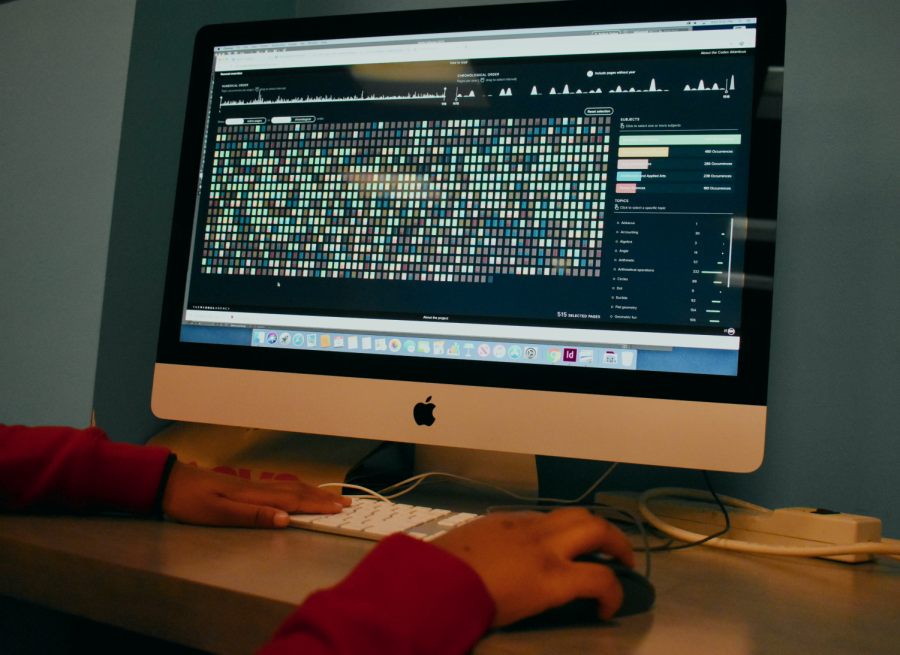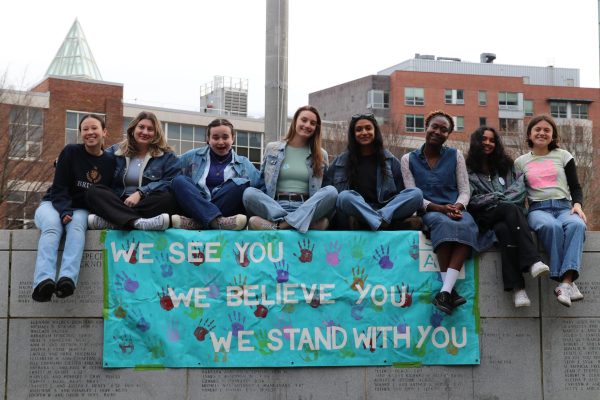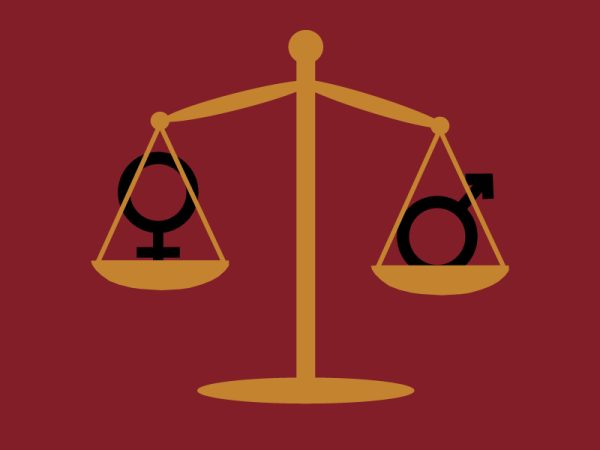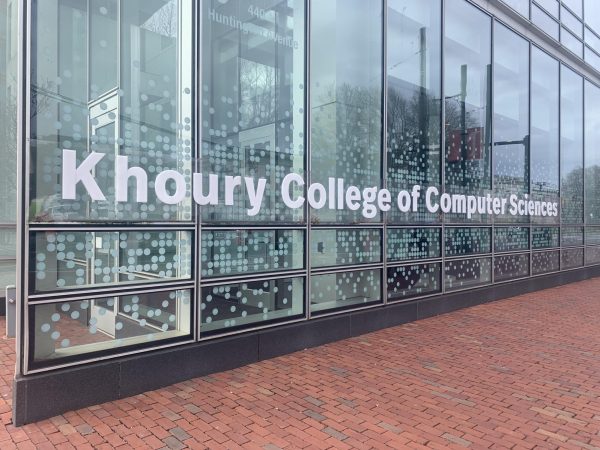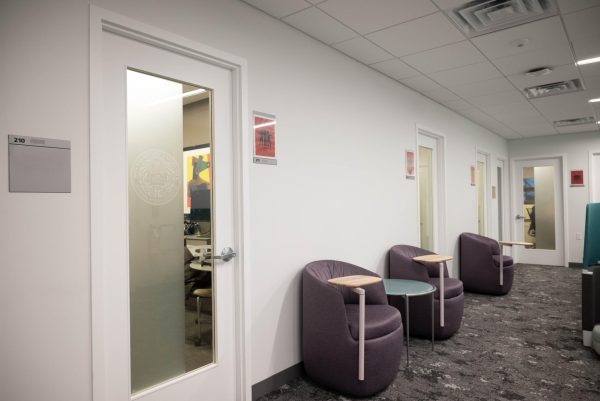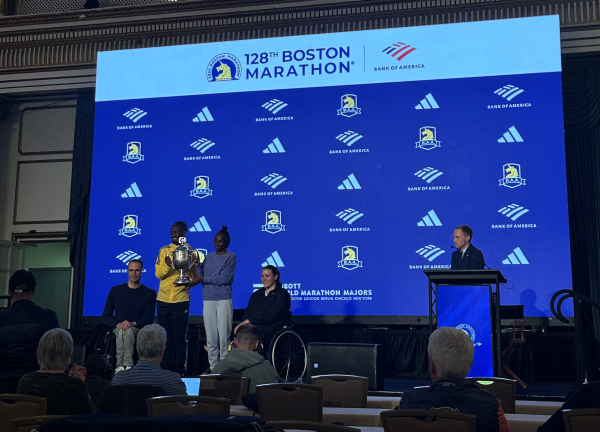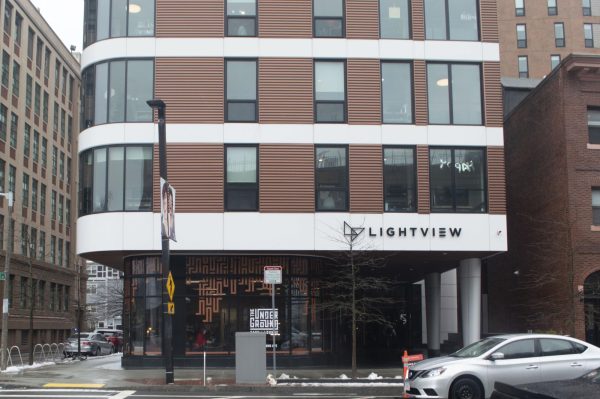Codex Atlanticus digital installation brings Da Vinci to Northeastern
Students explore the online version of Codex Atlanticus.
December 4, 2019
Over a thousand pages of Leonardo Da Vinci’s sketches and writings are currently housed in the atrium of the Interdisciplinary Science and Engineering Complex, or ISEC, through a new interactive data visualization.
Open until Dec 18, the Codex Atlanticus is the biggest collection of Da Vinci’s papers, comprised of 1,119 pages of writings and drawings throughout the years 1478 to 1519. Until now, people looking to read the Codex had to visit Milan’s Biblioteca Ambrosiana, but Milan-based design firm The Visual Agency has created a groundbreaking application that allows the public to analyze the Codex from anywhere, presented through high resolution digital images.
Northeastern unveiled this installation Nov. 20 with a panel discussion featuring Matteo Bonera, the Visual Agency’s creative director; Francesco Braschi, reverend professor at Biblioteca Ambrosiana; Cammy Brothers, associate professor of art and design at Northeastern; Amy Halliday, director of the Center for the Arts and Paolo Ciuccarelli, professor of design as well as the director of the new Center for Design.
The College of Arts, Media and Design’s Dean, Elizabeth Hudson, opened the event by explaining how this exhibition, Ciuccarelli’s first major project in his brand new role, fits with the college’s goals and the university’s ten-year Age of Humanics Strategic Plan. This plan “integrates and elevates our human and technological capacities to meet the global challenge of our time: building sustainable human communities.”
“In many ways, Leonardo Da Vinci is the ultimate model of humanics and for the kind of adaptable, socially engaged, and design-oriented students we in CAMD hope to foster,” Hudson said.
During Bonera’s presentation, he explained the process of beginning to create the Codex Atlanticus installation. The Visual Agency used a 1970’s philological study by former Università Cattolica del Sacro Cuore of Milan romance philology professor Augusto Marinoni as the basis for their application.
“We wanted to use data visualization as a tool to access, explore and analyze the content of this huge amount of complexity,” he said. “What we did at the beginning was find something famous on which the application was based on,” Bonera said.
Using Marinoni’s study, Bonera and his team were able to categorize the Codex in a way that allows the user to see the frequency at which Da Vinci thought about various topics.
“In order to make this complexity understandable, we gather these 120 topics into 5 macro topics, and if we sum up all the occurrences of the topics, we can know now, for example, that Leonardo Da Vinci speaks about algebra 1,100 times during the Codex Atlanticus,” Bonera said.
The panelists are hopeful that The Visual Agency’s approach to combining data visualization with Renaissance art history will be studied and used for other fields of study.
“I think we would like to see the model that has been found by Matteo and the Visual Agency to be used for not only Da Vinci, but also for an approach to Renaissance artists in the digital age, which can be a new one,” Braschi said.
He added that The Visual Agency is talking with Matteo to bring Raphael’s work to this digital software.
Brothers, who specializes in Italian Renaissance art and architecture, thinks that this exhibition may help people who may feel alienated from traditional art history to gain a better understanding of Da Vinci’s work.
“A problem, not only of Leonardo Da Vinci and the idea of the genius but really of the arts, is that the arts can seem inaccessible or elite. It can feel like there’s a high barrier to entry and for understanding in the arts,” Brothers said. “I think that this kind of tool, because it’s interactive and because younger people have fluency with digital tools than have a sense of their own competence and knowledge of the arts, can provide a kind of bridge to that realm that I think is exciting.”


